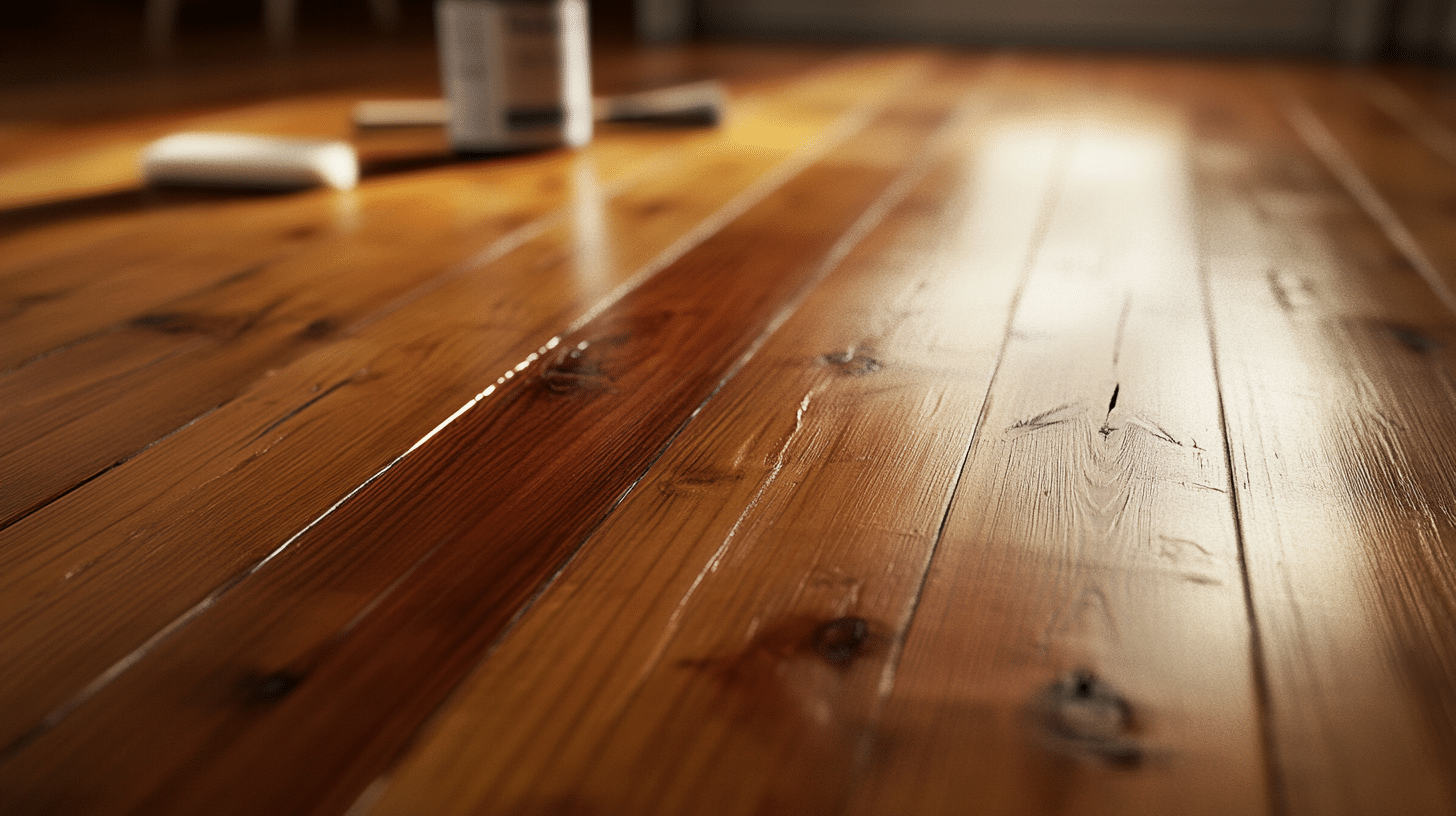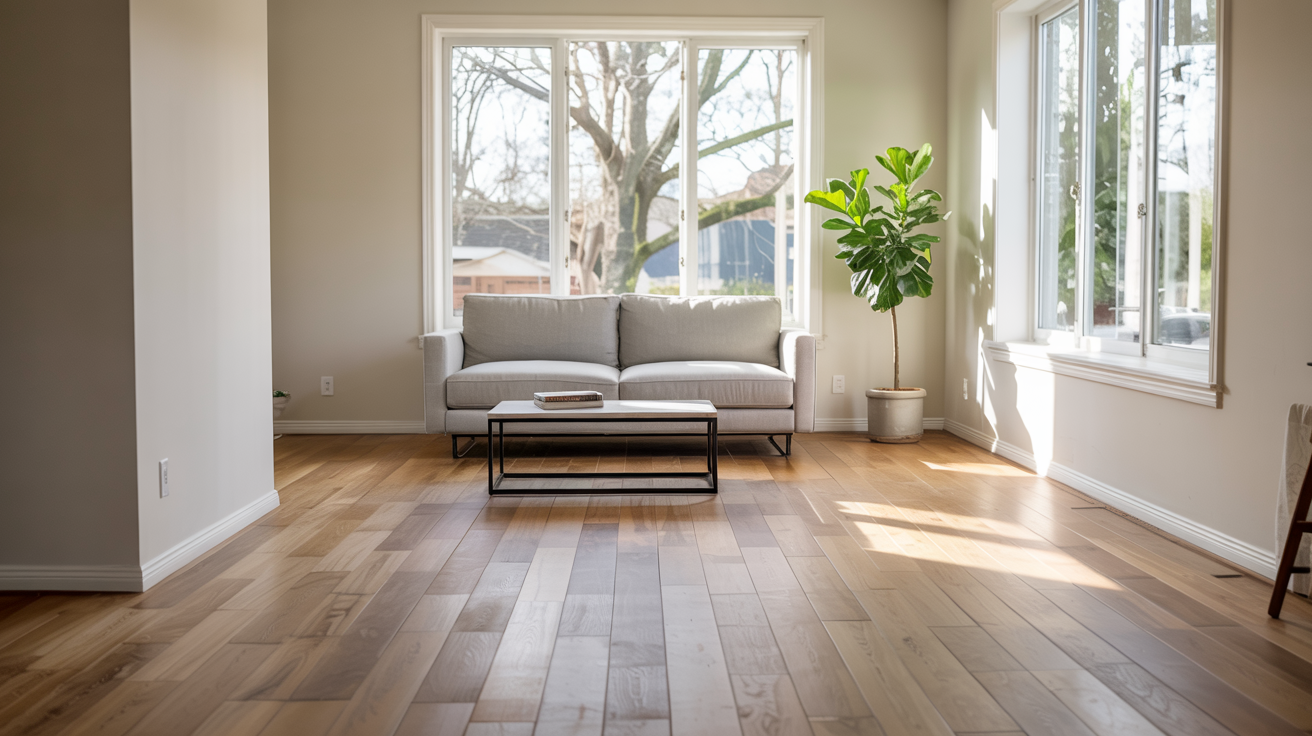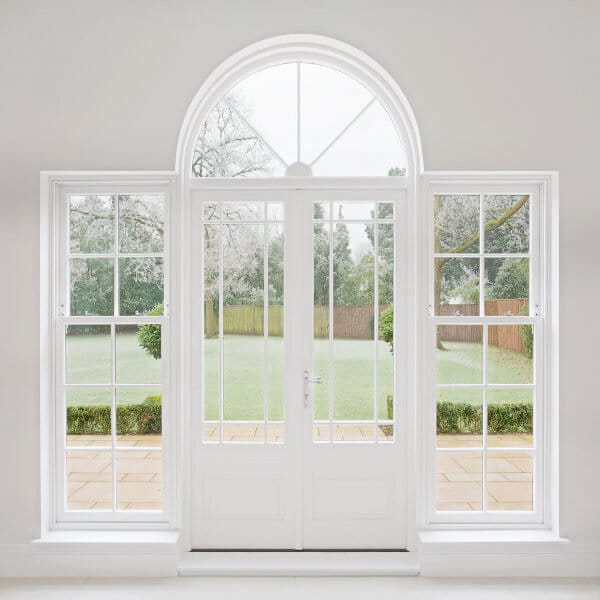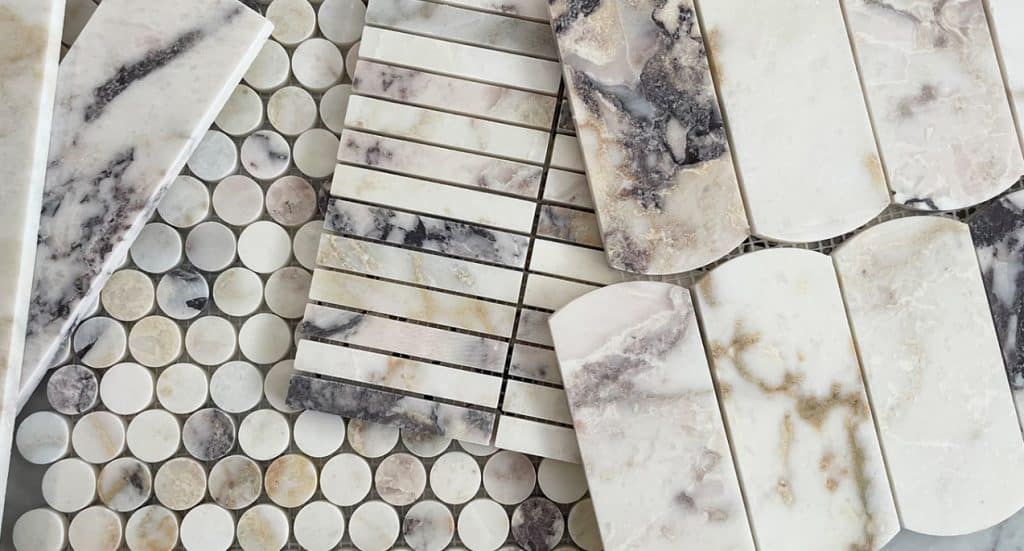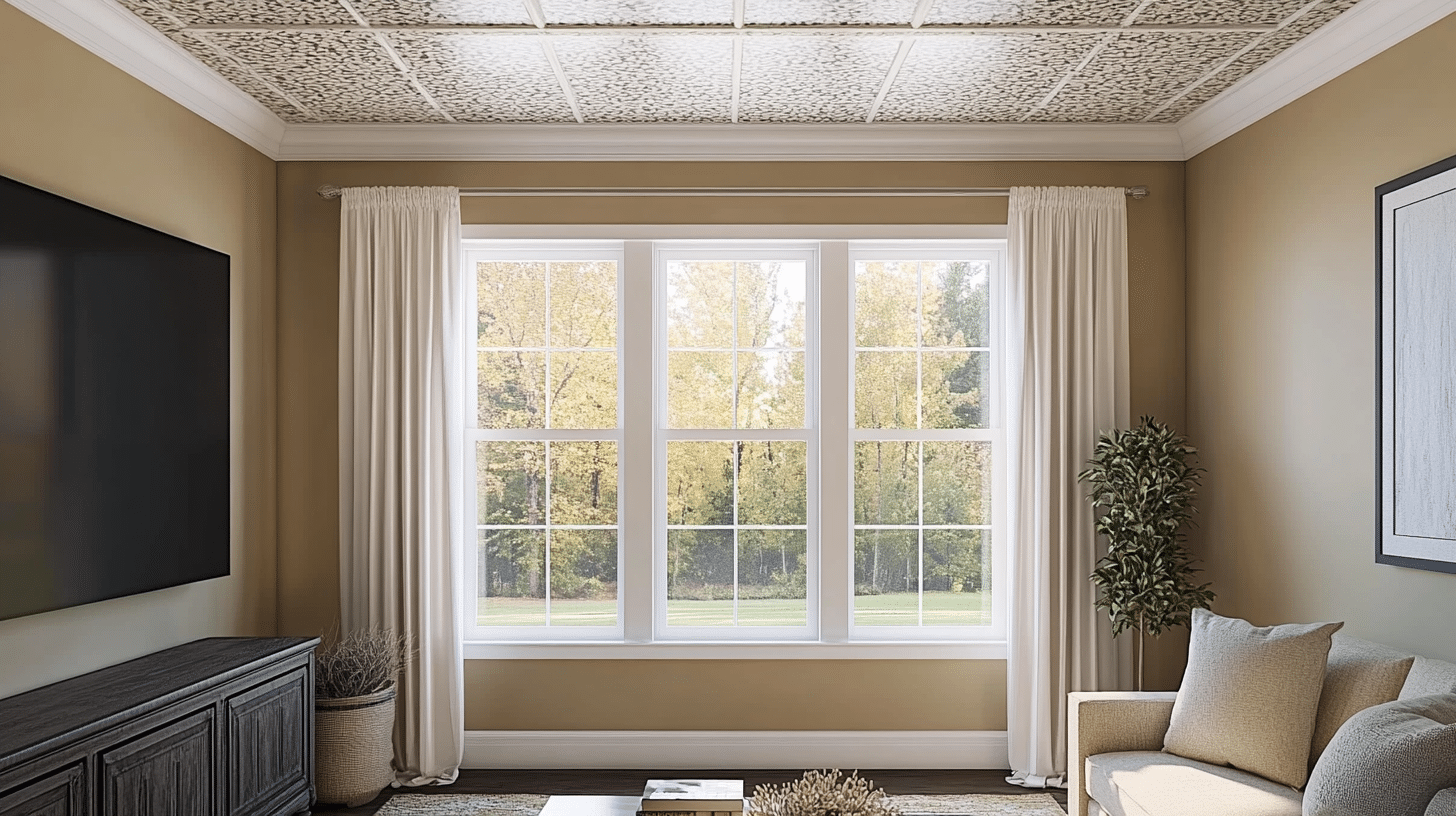Pine Floor Finishes: A Comparison
Choosing the right finish for your pine floors can be tricky. With so many options available, how do you know which one will provide the look, durability, and maintenance you want?
In this pine floor finishes comparison, we’ll explain the differences between popular finishes like hard wax oil and varnish.
We’ll discuss their pros and cons, ideal uses, and even touch on other finishes like tung oil and wax. By the end of this blog, you’ll have a clearer idea of which finish best suits your space and needs.
Keep reading to find the perfect match for your pine flooring.
Types of Pine for Flooring

When choosing pine for flooring, it’s important to understand the differences between the types. Each one offers unique qualities that make it suitable for various needs.
Here’s a look at the main types of pine used in flooring:
1. Eastern White Pine
Eastern White Pine is a softwood with a light, pale color and a smooth texture. It’s easy to work with and can add a rustic charm to your space. This type of pine is best suited for areas with moderate foot traffic.
Its more natural appearance allows its wood grain to show, giving a room a warm, inviting look. However, because it’s softer, it’s more prone to damage from dents and scratches compared to harder pines.
2. Southern Yellow Pine
Southern Yellow Pine is known for its strength and durability, making it ideal for high-traffic areas. It has a deep, golden hue and is denser than other types of pine. This makes it more resistant to damage like scratches, dents, and moisture.
Southern Yellow Pine is commonly used in both residential and commercial spaces where durability is a priority.
It’s a great choice for anyone looking for a wood that can handle heavy use while still offering an attractive finish.
3. Heart Pine
Heart Pine is a dense hardwood that comes from the center of the pine tree, making it much stronger and more durable than other types of pine.
Its color ranges from rich reddish-brown to amber tones, adding a touch of sophistication to any room.
This type of pine is perfect for high-traffic areas and is often used in historic homes or for those looking to create a more traditional look.
Heart Pine is not only durable but also offers a unique, vintage feel that adds character and value to any space.
Comparing Pine Floor Finishes
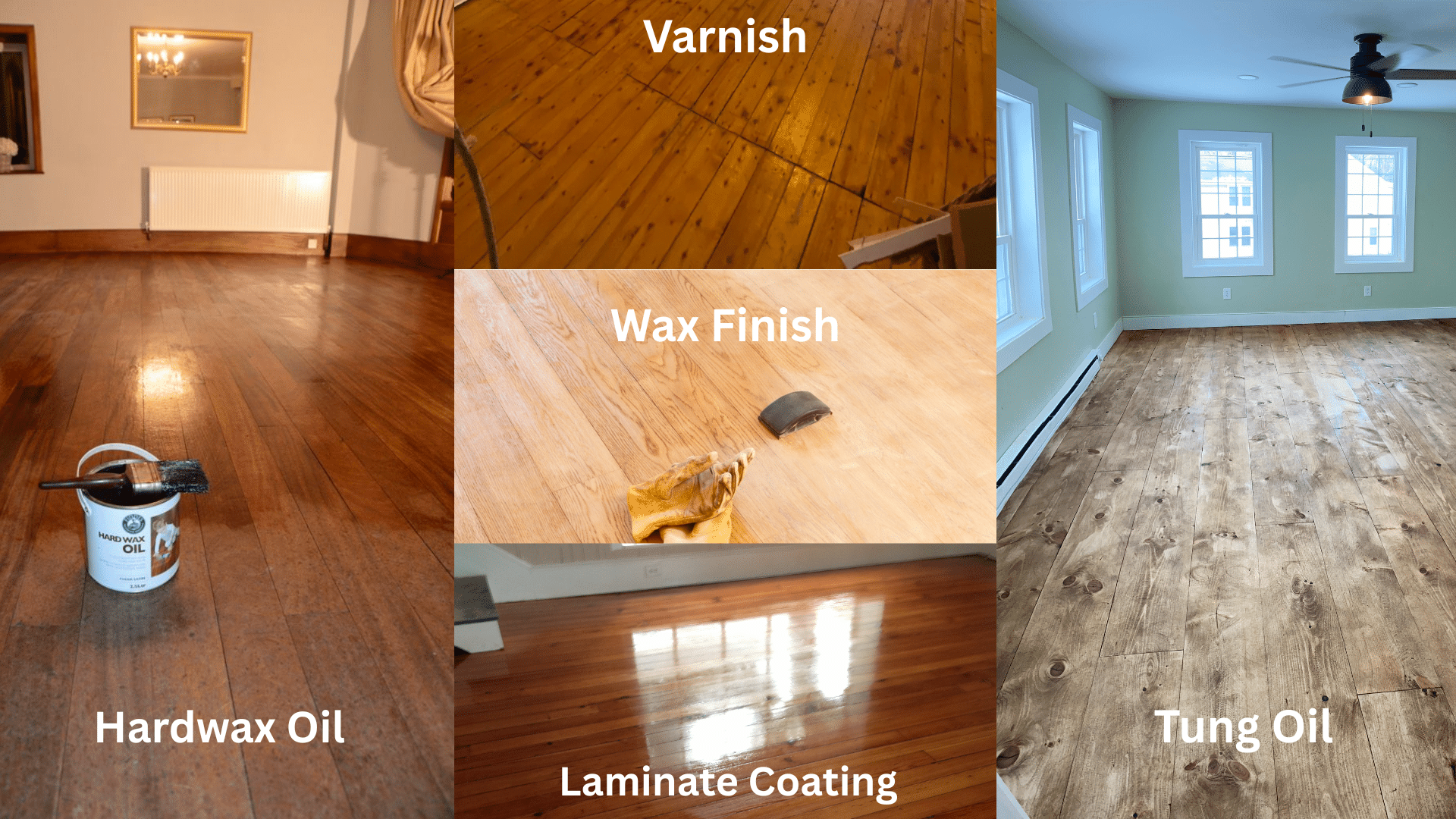
The table below compares the pros, cons, best uses, and examples of products for various pine floor finishes to help you better understand their differences.
| Flooring Type | Pros | Cons | Best for | Examples of Products |
|---|---|---|---|---|
| Pine (Hardwax Oil) | Natural look, easy maintenance, enhances wood grain | Less durable, requires reapplication every few years | Low to medium traffic areas, bedrooms, or living rooms | Osmo Polyx Oil, Fiddes Hard Wax Oil |
| Pine (Varnish) | High durability, scratch and stain resistant | Harder to repair, gives a shinier finish | High-traffic areas, moisture-prone spaces like kitchens and bathrooms | Water-based polyurethane, oil-based polyurethane |
| Pine (Tung Oil) | Penetrates wood, is water-resistant, and improves the natural color | Long drying time; requires multiple coats for protection | Homes seeking natural finish, areas with light traffic | Pure Tung Oil, Hope’s Tung Oil |
| Pine (Wax Finish) | Soft matte finish, easy to apply and repair | Not as durable, wears off quickly, and attracts dirt | Low-traffic areas like bedrooms, areas with minimal wear | Briwax, Minwax Paste Finishing Wax |
| Pine (Laminate Coating) | Scratch-resistant, highly durable, good for heavy traffic | Difficult to repair if damaged, not as natural looking | High-traffic areas, offices, family rooms | Pergo, Mohawk laminate finish |
Choosing the Best Finish for Your Pine Floor
Selecting the right finish for your pine floor depends on several factors, including your home’s traffic level, the look you want, and how much maintenance you’re willing to do.
Let’s break down how to make the best choice.
Deciding Between Hardwax Oil and Varnish
Consider your priorities when choosing between hard wax oil and varnish. Hard wax oil is ideal if you want a more natural look and easy touch-ups, but it’s less durable.
Varnish, on the other hand, provides excellent protection and is better for high-traffic areas, but it can be harder to repair.
Consider your flooring’s use and how much upkeep you’re willing to do to make the right choice.
Factors to Consider
One of the most important factors to consider is the traffic level in your space. Due to its durability, varnish is usually better for high-traffic areas.
If you prefer a more natural look, hard wax oil might be the best option. Maintenance plays a role, too; hard wax oil requires more frequent touch-ups, while varnish can last for several years.
Budget is also a factor, as varnish typically costs less than hard wax oil.
Considerations for Staining Pine Floors Before Finishing
Staining your pine floor before applying a finish can enhance its color and help hide imperfections. If you want a darker or richer tone, staining is a great option.
However, make sure the stain you choose is compatible with your finish. Some finishes, like hardwax oil, work better with certain stains, while others may cause discoloration.
Always test a small area first to see how the stain and finish react together.
How to Apply Pine Floor Finishes
Applying a finish to your pine floors isn’t difficult, but it does require the right steps. Whether you choose hardwax oil or varnish, following the proper process will ensure a beautiful, long-lasting result.
Let’s walk through the steps for preparing your floor and applying both finishes.
1. Preparing Your Floor for Finishing
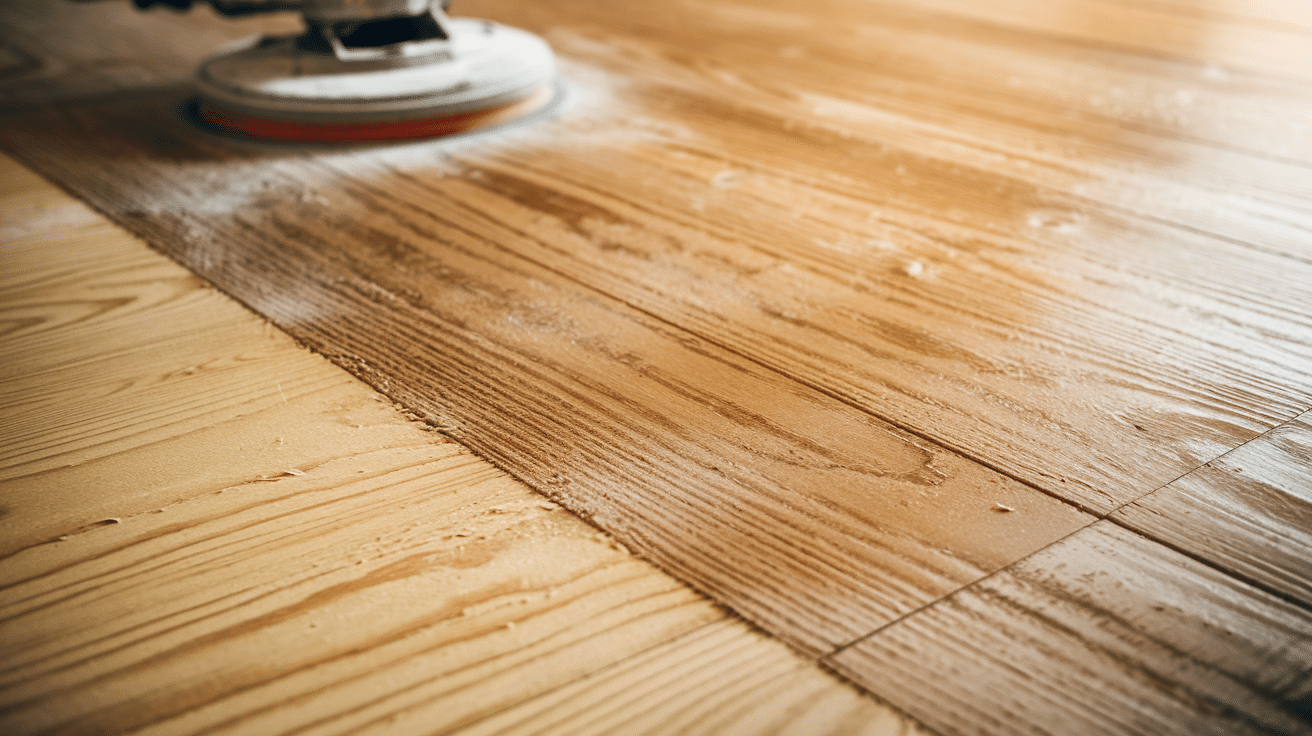
Before you begin, sand your floor to remove any old finishes or rough spots. Once the surface is smooth, clean the floor thoroughly to get rid of dust and dirt. This is important as any leftover debris can affect how the finish adheres.
If you want to change the color of your pine floors, now is the time to choose a stain. Staining can enhance the natural tones of the wood, but it’s entirely up to you if you want to add color.
2. Application Process for Hardwax Oil
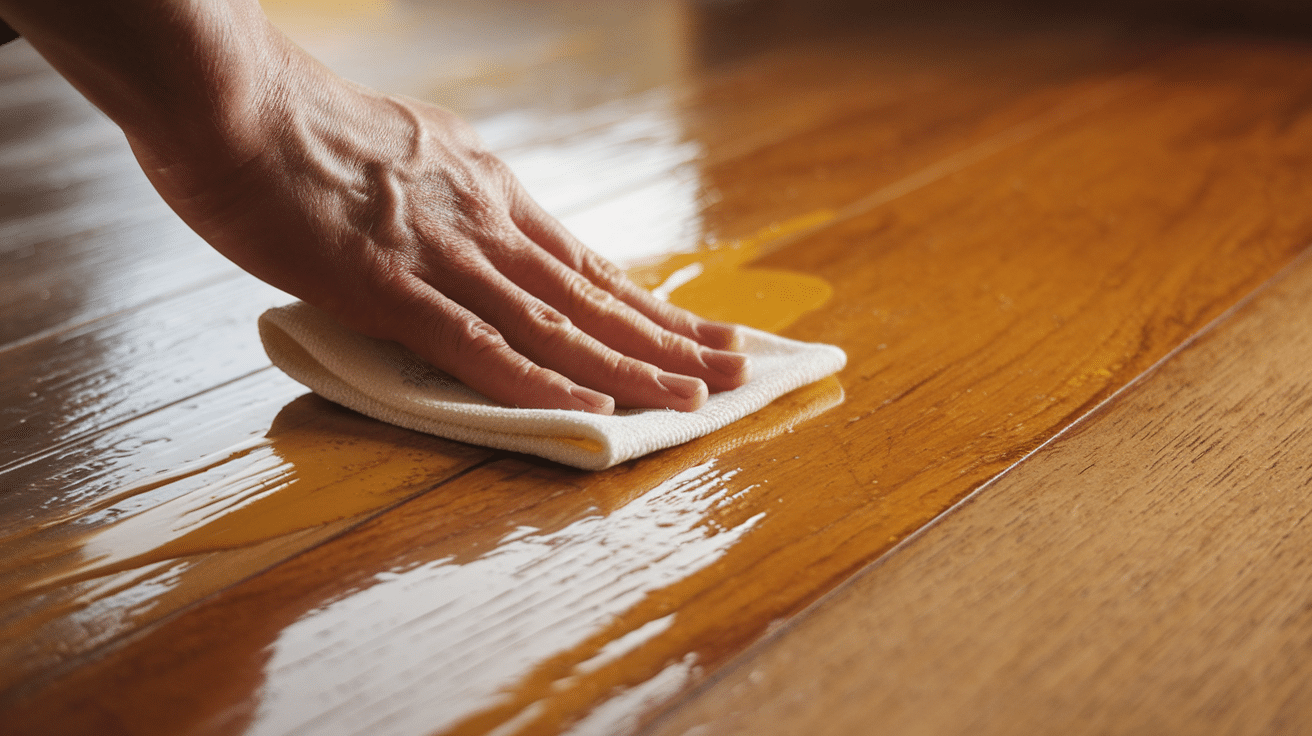
To apply hard wax oil, use a clean, lint-free cloth or applicator pad. Work in small sections, spreading the oil evenly across the surface. Avoid pooling, as it can create uneven spots.
Let the oil sit on the floor for about 20-30 minutes to soak into the wood. Then, wipe off any excess oil. Afterward, let the floor dry for 24-48 hours before walking on it.
Remember, hard wax oil needs to be reapplied every 1-2 years, depending on the amount of foot traffic on the floor.
Personal Recommendation: Osmo Polyx-Oil (Original)
- Why? Osmo is a gold standard in hardwax oils. It improves the natural beauty of pine while providing excellent durability and water resistance.
- Finish options: Matte, Satin, Gloss
- Coverage: ~260 ft² per liter (very economical long-term)
- Price: Around$55–$65 per liter
3. Application Process for Varnish
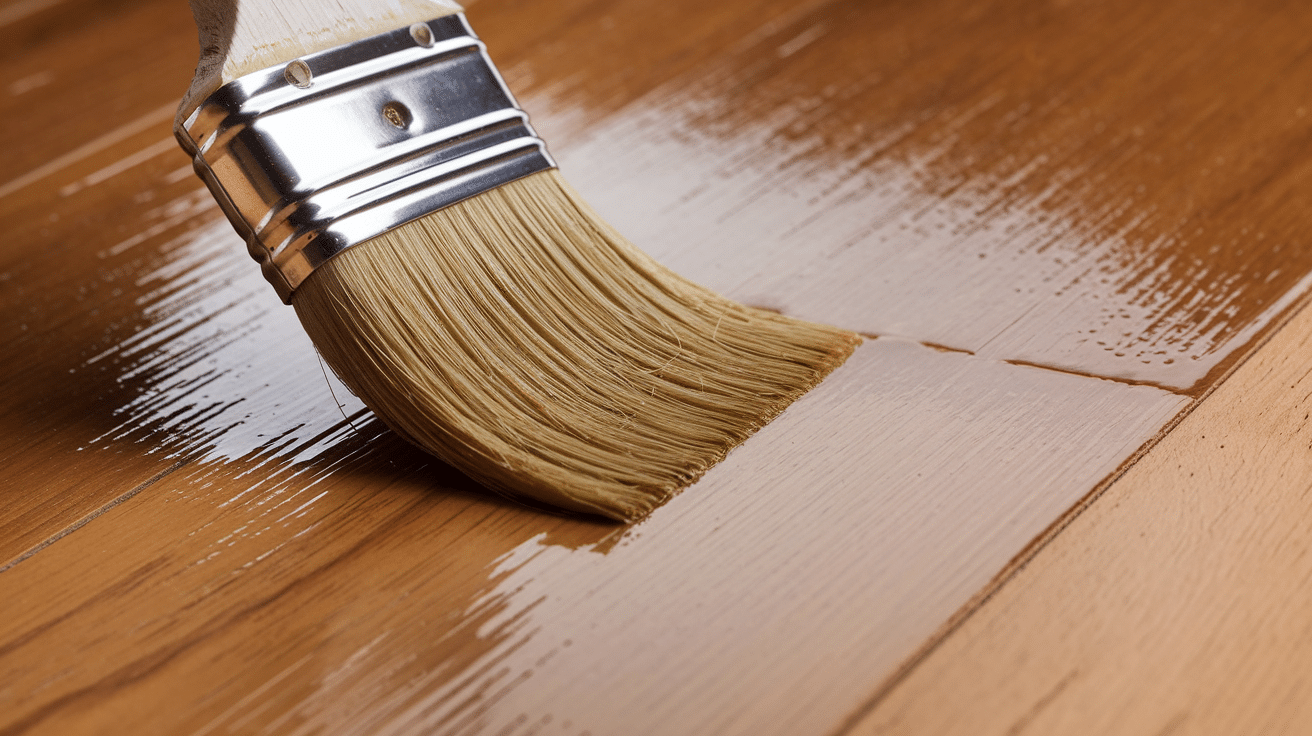
When applying the varnish, use a brush or roller to apply a thin, even coat. Work in the direction of the wood grain to avoid streaks.
Let the first coat dry for 4-6 hours before lightly sanding it to smooth out the surface. Apply 2-3 more coats, ensuring each coat dries fully before applying the next one.
Varnish can take 24 to 48 hours to cure fully, so be patient before walking on the floor.
Personal Recommendation: Varathane Water-Based Floor Finish (by Rust-Oleum)
- Type: Water-based polyurethane
- Finish options: Satin, Semi-Gloss, Gloss
- Why it’s great: Extremely affordable and widely available at home improvement stores like Home Depot or Lowe’s.
- Coverage: 400–500 ft² per gallon
- Price: Around$40–$50 per gallon
Maintenance and Repairing Pine Floors
Proper maintenance is essential to keeping your pine floors looking beautiful and lasting longer.
Regular care helps protect the wood from damage and keeps it fresh. The better you maintain your floor, the less work you’ll need to repair it or reapply finishes.
Tips for Maintaining and Preparing Pine Floors:
- Sweep or vacuum regularly to remove dirt and debris.
- Clean spills immediately to prevent stains or water damage.
- Use felt pads under furniture to avoid scratches.
- Apply a fresh coat of finish as needed, typically every 1-2 years.
- Refinish any scratches or dents with touch-up products when required.
For minor damage, lightly sand the area and apply the same finish to restore the surface. For deeper scratches, fill the dent with wood filler before refinishing.
Wrapping Up
I hope you have a better understanding of the key differences between various finishes for your pine floors.
If you’re looking for a natural appearance, high durability, or something that requires less maintenance, there’s a finish that suits your needs.
Hardwax oil is ideal for those seeking a more natural look, while varnish offers greater protection for high-traffic areas.
Remember, the finish you choose should match your lifestyle and how much care you’re willing to put into your floors.
Now that you have a clearer understanding, why not start your project? Apply one of these finishes and see the difference it makes in your home.

